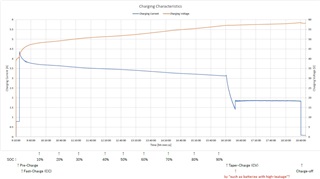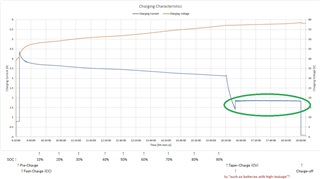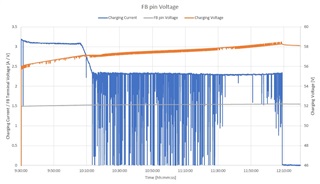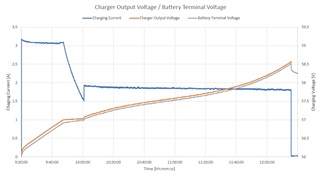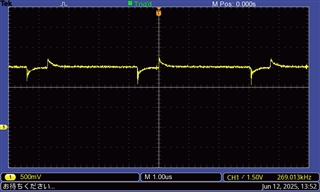Other Parts Discussed in Thread: TPS26750, , BQ25751
Tool/software:
Hi,
I use TPS26750 & BQ25756 for charging and discharging 14s Li-ion battery on USB-C PD3.1 240W(48V/5A) sysytem.
When charging the battery,CV mode start from 3.1A(CC mode),but CV mode changes to CC mode(1.8A) at 1.5A
(setting of termination current is 0.3A).
I suspect that the cause is the high leakage current of the battery as stated in BQ25756 datasheet(8.3.4.6 CV Timer).
So I want to try to change the setting of the "CV_TMR" register from disable to 3hr.
I am writing the binary data created using online configration tool to the EEPROM.
There are no settings in the online configuration tool, and there doesn't appear to be any settings in the binary data in the EEPROM
(Address:0x0AFC-0x0BFB, 0x46FC-0x47FB).
Is there any way to set this register?
Regards,
Ken18
